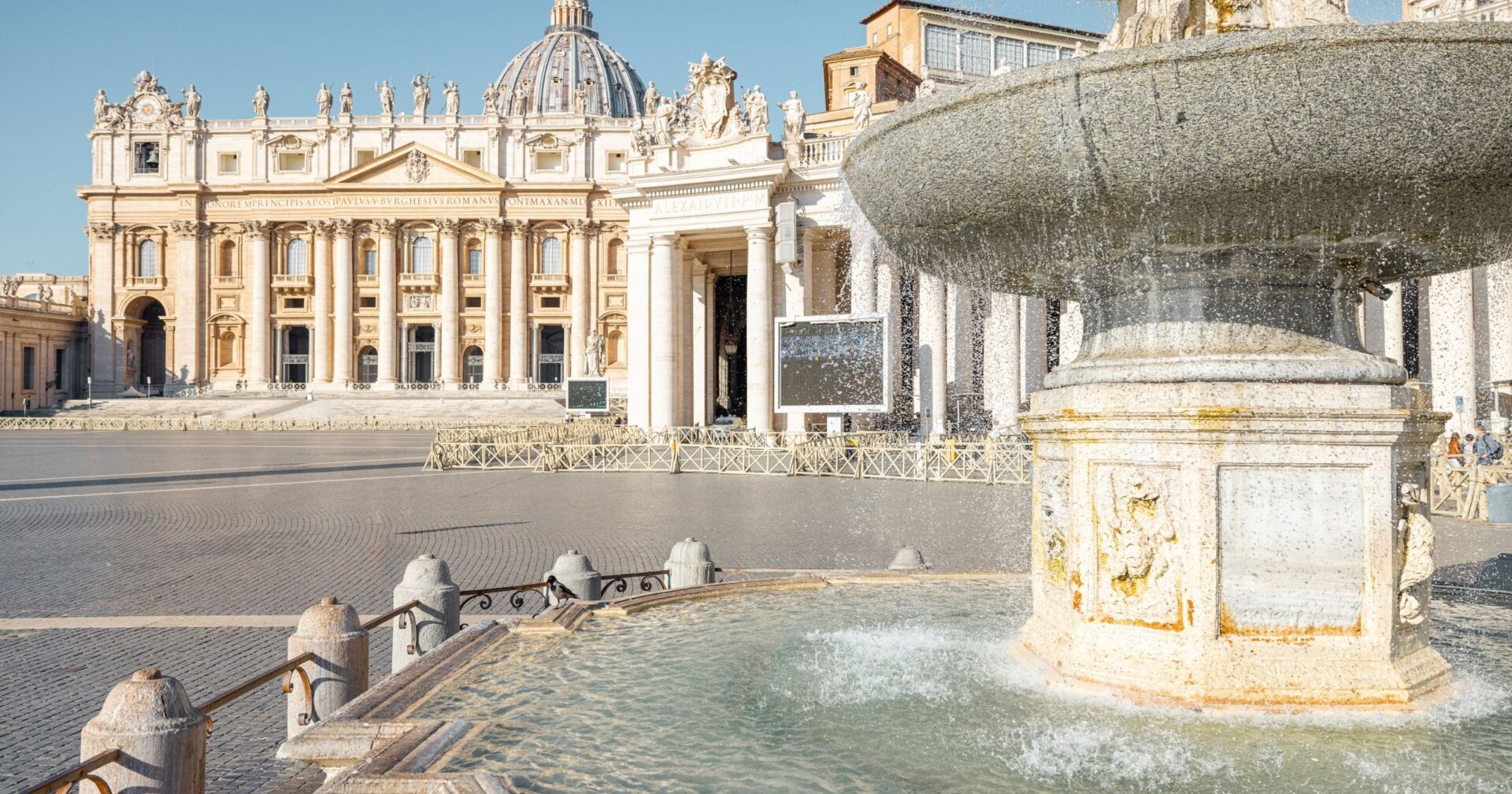Some time after Great Fire of Rome in 64 A.D. and before the last year of Nero’s reign in 68 A.D., Saint Paul the Apostle was beheaded in Rome under the emperor’s orders. The earliest reference to his martyrdom comes in the First Epistle of Clement:
“Owing to envy, Paul also obtained the reward of patient endurance, after being seven times thrown into captivity, compelled to flee, … and suffered martyrdom under the prefects.”
Because he was a Roman citizen, Paul was beheaded rather than crucified. He was bound to a pillar and decapitated, his head rebounding three times and each time it did a fountain miraculously sprang up. The springs are called the Aquae Salviae.
In the 5th century, a church was built upon the site of Paul’s martyrdom called today the Church of San Paolo alle Tre Fontane, Saint Paul at the Three Fountains. In 1599, it was rebuilt under the auspices of Cardinal Pietro Aldobrandini.
An 1867 restoration of the church found fragments of a marble epitaph dated to 689 A.D. mentioning it as the site of the martyrdom of Saint Paul the Apostle and being renovated by Pope Sergius I.
“Ac palma posita est temporib. Dom Sergi Papa, annu secundu. [This is the year 689].”
Up until 1950, water was distributed from the springs to Faithful pilgrims. However, that year the fountains were sealed after pollution made it unsafe to drink. Three symbolic monumental covers were placed over each to mark the locations where Saint Paul’s head touched.
Today the church is located on the grounds of the Tre Fontane Abbey, featuring a large marble plaque which reads: “Place of Martyrdom of Saint Paul the Apostle, where three sources miraculously gushed out.”
Photo credit: RossHelen / Shutterstock.com















[…] to Our Lady’s Comforting Power in Lourdes – Solène Tadié at National Catholic Register The Three Fountains: When Water Miraculously Sprung up at Saint Paul’s Execution – uCatholic The Treasury of Monza Cathedral – Gregory DiPippo at New Liturgical […]